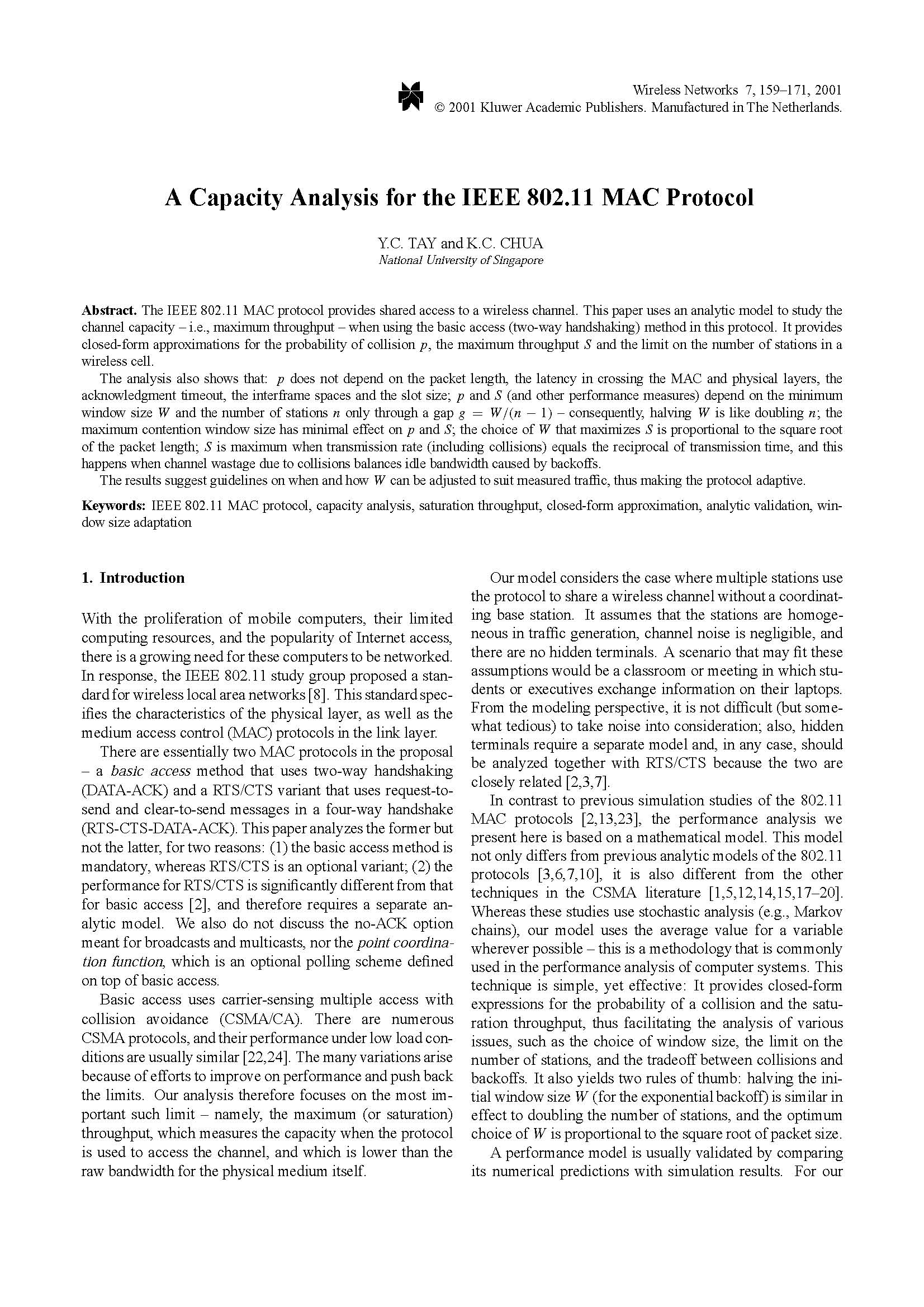A Capacity Analysis for the IEEE 802.11 MAC Protocol
Article Ecrit par: Chua, K. C. ; Tay, Y. C. ;
Résumé: The IEEE 802.11 MAC protocol provides shared access to a wireless channel. This paper uses an analytic model to study the channel capacity – i.e., maximum throughput – when using the basic access (two-way handshaking) method in this protocol. It provides closed-form approximations for the probability of collision p, the maximum throughput S and the limit on the number of stations in a wireless cell. The analysis also shows that: p does not depend on the packet length, the latency in crossing the MAC and physical layers, the acknowledgment timeout, the interframe spaces and the slot size; p and S (and other performance measures) depend on the minimum window size W and the number of stations n only through a gap g=W/(n-1) – consequently, halving W is like doubling n; the maximum contention window size has minimal effect on p and S; the choice of W that maximizes S is proportional to the square root of the packet length; S is maximum when transmission rate (including collisions) equals the reciprocal of transmission time, and this happens when channel wastage due to collisions balances idle bandwidth caused by backoffs. The results suggest guidelines on when and how W can be adjusted to suit measured traffic, thus making the protocol adaptive.
Langue:
Anglais
Thème
Informatique
Mots clés:
Protocole MAC IEEE 802.11
Analyse capacite
Validation analytique
Saturation rendement
Approximation forme close
Débit saturation
Adaptation taille
Windows (programmes informatiques)

